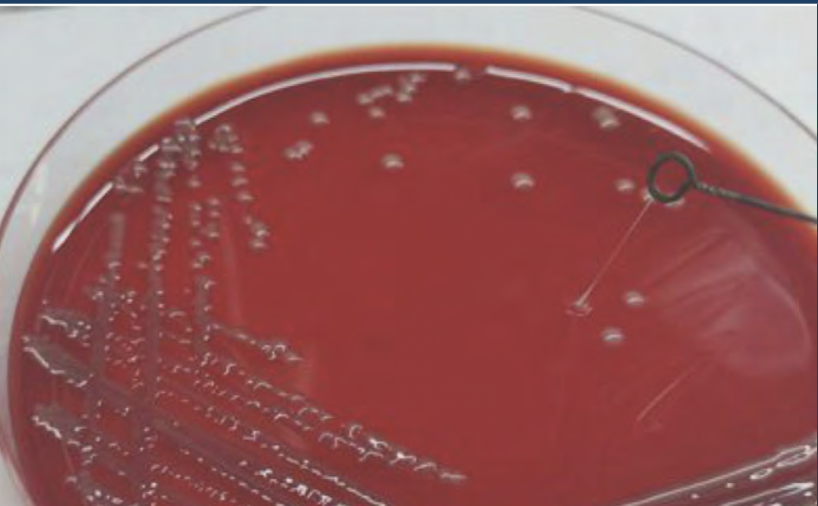Cryptogenic liver abscess associated with hypervirulent Klebsiella pneumoniae ST375: unusual strain in our region
Abstract
Cryptogenic liver abscess (CLA) caused by hypervirulent Klebsiella pneumoniae (hvKp) is an endemic disease in Asia, and is rarely reported in Argentina. It affects healthy community members, leading to severe metastatic complications. hvKp strains predominantly belong to sequencetype ST23, capsular serotype K1, and to a lesser extent to other sequence types, K1 or K2. They usually possess plasmids carrying virulence genes involved in increased capsular production and siderophore biosynthesis. The hypermucoviscous (HMV) phenotype, together with broad antimicrobial susceptibility, are suggestive of hvKp, and the detection of genetic markers confirms it. We describe here the first report of hvKp-HMV ST375 (K2) causing CLA in this region. Rapid detection of hvKp associated with CLA allows for timely treatment, prevention of metastasis, and alerts about the global circulation of this emerging pathogen.
Key words: hypervirulent Klebsiella pneumoniae, siderophore, liver abscess, sequencetype ST375.
Downloads
References
2. Russo TA, Marr CM. Hypervirulent Klebsiella pneumoniae. Clin Microbiol Rev. 2019 May 15;32(3): e00001-19. doi: 10.1128/CMR.00001-19.
3. Russo TA, Olson R, Fang CT, Stoesser N, Miller M, MacDonald U, et al. Identification of Biomarkers for Differentiation of Hypervirulent Klebsiella pneumoniae from Classical K. pneumoniae. J Clin Microbiol. 2018 Aug 27;56(9): e00776-18. doi: 10.1128/JCM.00776-18.
4. Cejas D, Fernández Canigia L, Rincón Cruz G, Elena AX, Maldonado I, Gutkind GO, et al. First isolate of KPC-2-producing Klebsiella pneumonaie sequence type 23 from the Americas. J Clin Microbiol. 2014 Sep;52(9):3483-5. doi: 10.1128/JCM.00726-14.
5. Rinaudo M, Marchiaro P, Nannini E, Lahitte M, Scapellato P, Nemirosvky C, Zylberman M, Vila A, Viale A, Limansky A. Caracterización molecular de aislamientos de Klebsiella pneumoniae hipermucoviscosa asociados a abscesos hepáticos. XV Congreso Argentino de Microbiología Buenos Aires Argentina. Septiembre 25-27, 2019. (Resumen 0848) ISBN 978-987-46701-5-1.
6. Vila A, Cassata A, Pagella H, Amadio C, Yeh KM, Chang FY, Siu LK. Appearance of Klebsiella pneumoniae liver abscess syndrome in Argentina: case report and review of molecular mechanisms of pathogenesis. Open Microbiol J. 2011; 5:107-13. doi: 10.2174/1874285801105010107.
7. Liao CH, Huang YT, Chang CY, Hsu HS, Hsueh PR. Capsular serotypes and multilocus sequence types of bacteremic Klebsiella pneumoniae isolates associated with different types of infections. Eur J Clin Microbiol Infect Dis. 2014 Mar;33(3):365-9. doi: 10.1007/s10096-013-1964-z.
8. Sohrabi M, Alizade Naini M, Rasekhi A, Oloomi M, Moradhaseli F, Ayoub A, et al. Emergence of K1 ST23 and K2 ST65 hypervirulent klebsiella pneumoniae as true pathogens with specific virulence genes in cryptogenic pyogenic liver abscesses Shiraz Iran. Front Cell Infect Microbiol. 2022 Aug 9; 12:964290. doi: 10.3389/fcimb.2022.964290.
9. Lan P, Jiang Y, Zhou J, Yu Y. A global perspective on the convergence of hypervirulence and carbapenem resistance in Klebsiella pneumoniae. J Glob Antimicrob Resist. 2021 Jun; 25:26-34. doi: 10.1016/j.jgar.2021.02.020.
10. Feizabadi MM, Raji N, Delfani S. Identification of Klebsiella pneumoniae K1 and K2 Capsular Types by PCR and Quellung Test. Jundishapur J Microbiol. 2013; 6(9): e7585. https://doi.org/10.5812/jjm.7585.

Copyright (c) 2025 Patricia Marchiaro, Cecilia Martínez, Valeria David, Laura Colombo, Jorge Kilstein, Luis Ignacio Martínez Amezaga, Mariángel Rinaudo

This work is licensed under a Creative Commons Attribution-NonCommercial-ShareAlike 4.0 International License.





